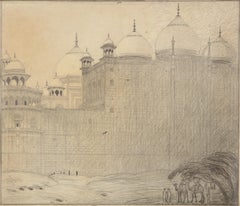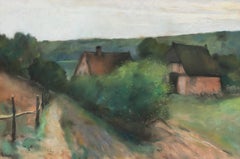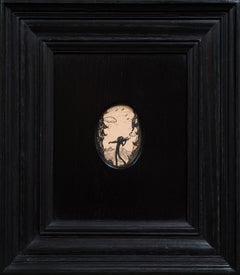1910s Landscape Drawings and Watercolors
Art Nouveau 1910s Landscape Drawings and Watercolors
Paper, Graphite
Art Nouveau 1910s Landscape Drawings and Watercolors
Chalk, Paper
Naturalistic 1910s Landscape Drawings and Watercolors
Laid Paper, Pencil, Pastel, Charcoal
1910s Landscape Drawings and Watercolors
Paper, Watercolor
1910s Landscape Drawings and Watercolors
Paper, Pastel
Naturalistic 1910s Landscape Drawings and Watercolors
Oak, Paper, Ink
Impressionist 1910s Landscape Drawings and Watercolors
Paper, Watercolor, Pencil
Modern 1910s Landscape Drawings and Watercolors
Pastel
American Modern 1910s Landscape Drawings and Watercolors
Paper, Watercolor
Realist 1910s Landscape Drawings and Watercolors
Watercolor
1910s Landscape Drawings and Watercolors
Paper, Crayon
Post-Impressionist 1910s Landscape Drawings and Watercolors
Paper, Ink, Watercolor
Other Art Style 1910s Landscape Drawings and Watercolors
Pen, Ink, Paper
Post-Impressionist 1910s Landscape Drawings and Watercolors
Watercolor
American Realist 1910s Landscape Drawings and Watercolors
Paper, Watercolor
American Realist 1910s Landscape Drawings and Watercolors
Paper, Watercolor
1910s Landscape Drawings and Watercolors
Color Pencil
1910s Landscape Drawings and Watercolors
Watercolor
Modern 1910s Landscape Drawings and Watercolors
Paper, Color Pencil
Post-Impressionist 1910s Landscape Drawings and Watercolors
Pastel
Impressionist 1910s Landscape Drawings and Watercolors
Watercolor
Expressionist 1910s Landscape Drawings and Watercolors
Watercolor
Impressionist 1910s Landscape Drawings and Watercolors
Watercolor
Modern 1910s Landscape Drawings and Watercolors
Watercolor, Graphite
English School 1910s Landscape Drawings and Watercolors
Paper, Gouache
Impressionist 1910s Landscape Drawings and Watercolors
Paper, Watercolor
1910s Landscape Drawings and Watercolors
Pencil
English School 1910s Landscape Drawings and Watercolors
Paper, Watercolor
American Impressionist 1910s Landscape Drawings and Watercolors
Paper, Watercolor
1910s Landscape Drawings and Watercolors
Watercolor, Gouache
Modern 1910s Landscape Drawings and Watercolors
Paper, Pastel
Academic 1910s Landscape Drawings and Watercolors
Watercolor
American Modern 1910s Landscape Drawings and Watercolors
Graphite, Watercolor
1910s Landscape Drawings and Watercolors
Woodcut
English School 1910s Landscape Drawings and Watercolors
Pencil, Paper, Watercolor
Impressionist 1910s Landscape Drawings and Watercolors
Paper, Graphite
Realist 1910s Landscape Drawings and Watercolors
Watercolor
Tonalist 1910s Landscape Drawings and Watercolors
Pastel
Naturalistic 1910s Landscape Drawings and Watercolors
India Ink, Paper, Watercolor
Post-Impressionist 1910s Landscape Drawings and Watercolors
Paper, Pencil
Modern 1910s Landscape Drawings and Watercolors
Watercolor
Impressionist 1910s Landscape Drawings and Watercolors
Paper, Color Pencil
Realist 1910s Landscape Drawings and Watercolors
Watercolor
Impressionist 1910s Landscape Drawings and Watercolors
Watercolor, Laid Paper
American Modern 1910s Landscape Drawings and Watercolors
Watercolor
Modern 1910s Landscape Drawings and Watercolors
Paper, Watercolor
Impressionist 1910s Landscape Drawings and Watercolors
Paper, Watercolor
Fauvist 1910s Landscape Drawings and Watercolors
Watercolor, Paper, Ink
Post-Impressionist 1910s Landscape Drawings and Watercolors
Paper, Ink, Watercolor
American Impressionist 1910s Landscape Drawings and Watercolors
Paper, Pencil
Modern 1910s Landscape Drawings and Watercolors
Watercolor, Pencil
Tonalist 1910s Landscape Drawings and Watercolors
Gouache, Watercolor
American Impressionist 1910s Landscape Drawings and Watercolors
Pencil
Modern 1910s Landscape Drawings and Watercolors
Watercolor
Other Art Style 1910s Landscape Drawings and Watercolors
Paper, Watercolor
Contemporary 1910s Landscape Drawings and Watercolors
Paper, Watercolor, Graphite
American Impressionist 1910s Landscape Drawings and Watercolors
Paper, Watercolor
American Modern 1910s Landscape Drawings and Watercolors
Watercolor, Gouache




